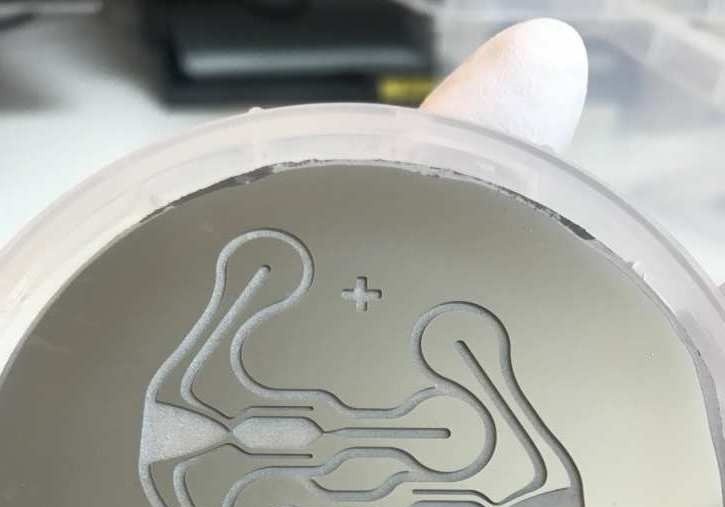Imperial College London researchers have created a tiny rocket engine for small satellites. It's called the ICE-Cube Thruster and runs on water. Using electrolysis, it splits water into hydrogen and oxygen, eliminating the need for bulky fuel tanks.

Unveiling Tiny Water-Powered Rocket Engine for Satellites
Researchers from Imperial College London have unveiled a minuscule rocket engine, powered by water. Interesting Engineering reported that this was designed to assist in the navigation of small satellites in space.
Known as the Iridium Catalysed Electrolysis CubeSat Thruster (ICE-Cube Thruster), this engine operates on electrolysis, a process that employs an electric current to split water into hydrogen and oxygen.
These gases are then funneled into a combustion chamber and a nozzle, both less than 1mm in length, to produce thrust. Central to the ICE-Cube Thruster lies an electrolyzer powered by a modest 20-watt current.
This electrolysis process divides water into hydrogen and oxygen gases, which then act as the propellant. This innovation eliminates the necessity for cumbersome storage tanks to contain gaseous propellants, a common hurdle in the quest for miniaturized propulsion systems.
Catering the Small Satellite Market
The ICE-Cube Thruster has been meticulously engineered to cater to the burgeoning small satellite market, primarily comprising nanosatellites weighing less than 10 kg.
These diminutive space vehicles impose stringent limitations concerning dimensions, mass, power consumption, and propellant capacity, posing significant challenges for the integration of traditional propulsion systems.
According to Imperial College London, there is a projected threefold increase in the annual deployment of spacecraft compared to 2016 figures. Remarkably, the majority of these spacecraft are nanosatellites, weighing under 22 lbs (10 kg), and they constituted around 90% of all spacecraft launched in 2017.
These nanosatellites come with demanding specifications, including compact size, minimal power consumption, and environmentally friendly propellants, all of which are effectively met by the ICE-Cube Thruster.
Advantages Over Other Propulsion Systems
This presents numerous benefits compared to alternative propulsion systems designed for small satellites. Firstly, it utilizes water as its propellant, a non-toxic, easily stored, and readily accessible resource.
Secondly, its performance levels are exceptional, thanks to the utilization of hydrogen and oxygen, the most efficient chemical propellants. Thirdly, it consumes only a fraction of the power required by comparable electric propulsion devices, making it highly suitable for nano-satellites.
Lastly, its production involves micro-electronics techniques, ensuring precision, scalability, and cost-effectiveness.
What distinguishes the ICE-Cube Thruster is its unique production method. It leverages a micro-electromechanical systems (MEMS) approach, commonly used in the microelectronics industry.
ESA has chosen the ICE-200 Thruster for its Lunar Pathfinder mission, slated for a 2024 launch. This thruster will play a crucial role in handling attitude control and orbit maintenance for the Lunar Pathfinder spacecraft.
New Atlas reported that these innovative ICE-Cube and ICE-200 thrusters demonstrate the potential of utilizing water as an eco-friendly and high-efficiency propellant in space missions.
The researchers anticipate that this technology will open up new possibilities and enhance the capabilities of small satellites in forthcoming missions.
Related Article : Successful Firehawk Rocket Engines, 3D-Printed Fuel Tests Clear Way for First Launch





